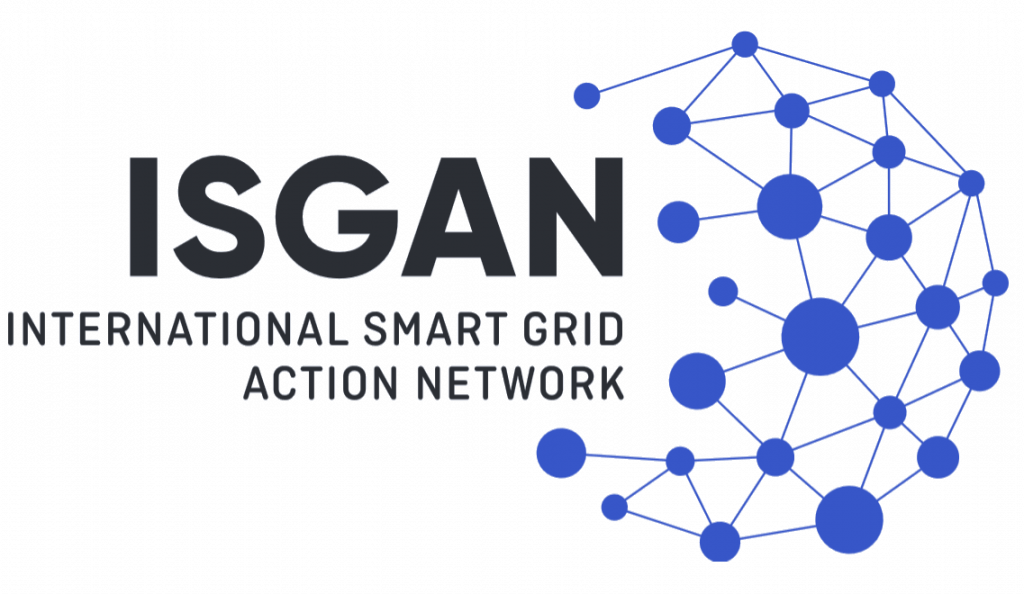New Framework for Forward-Looking Long-Term Planning of Smart Distribution Grids

ISGAN has developed this Framework to support key actors in the complex task of planning and developing smart, sustainable distribution grids for the future. Building upon the key messages of the ISGAN Policy Brief, this framework provides a structured approach to enhance understanding and facilitate the multilateral dialogue necessary to advance global distribution grid planning.
Its purpose is to help actors navigate system complexity and respond to multi-dimensional uncertainties. At its core, the Framework is a tool for fostering shared understanding and strengthening collaboration around common challenges in long-term distribution grid planning and implementation.
The Framework consists of three fundamental components:
Framework conditions underpinning a forward-looking planning process
Five phases of long-term planning and implementation
Key actor groups with formal roles and responsibilities in the planning process

Framework Conditions Enabling a Forward-Looking Planing Process

-
Legal & Governance
Framework -
Actor Coordination &
Collaboration -
Information & Knowledge
Infrastructure
Long-term planning of smart distribution grids requires reliable and supportive legal and institutional conditions for a long-term planning horizon. Undoubtedly, legal and governance frameworks on national and international level have a big impact on strategic planning and consequently for all phases up to implementation.
In many countries competences and mandates for grid planning are distributed among several actor groups and between national, regional and local levels. In some countries, regulation requires operators of medium- and low-voltage electricity grids to provide long-term plans for time horizons of 10 years or more.
A main challenge is that all actors involved in concrete grid planning must navigate a regulatory landscape that can shift unpredictably due to changes in political priorities, technological advancements, and environmental concerns.
To reduce these uncertainties for planning, reliable, effective and efficient institutional structures (laws, regulations, standards etc.) and governance processes need to be established. To master the transition towards future smart grids, a further remedy for reducing uncertainties is to orchestrate and coordinate strategies and planning processes between incumbent and new actor groups.
National energy policy makers and regulatory bodies are in focus to provide legal, political and governance structures as framework conditions. More concretely, national energy policy makers, who make strategic decisions in the larger context of megatrends may implement policy measures (e.g. incentives, ordinances etc) or even change legal underpinnings. Regulatory bodies, depending on their mandate, may intentionally or unintended incentivize or discourage various paths or solutions considered in long-term planning.
Key issues:
- General legal/regulatory certainty (incl. beyond electricity system) is a precondition for long-term strategic planning.
Legal, political and governance related uncertainties need to be eliminated or reduced as far as possible, or conditions for sharing of risks and uncertainties need to be facilitated by the relevant legitimized law making and executive public bodies, to provide favorable preconditions enabling the long-term planning processes.
Regional or national policy level actors can and should provide legally binding decisions and politically legitimized rules and regulation, plans, visions, and goals as key framework conditions for distribution system planning by actors at the level of utilities and distribution system operation. These include formal visions, strategies and decisions that may be of more general nature also beyond the electricity realm but with strong impact on long-term planning (e.g. urban development plans, climate policy goals, human rights declarations und universal basic services, declarations of climate crisis etc with status of constitutional law). It furthermore includes e.g. national climate policy goals binding countries by international law (COP 28 pledge related renewable energy components in their Nationally Determined Contributions (NDCs) [1]), national grid infrastructure plans (primarily related to the transmission systems level), other energy infrastructure plans (e.g. heat/cold, hydrogen etc.) as well as in other related sectors (ICT, mobility, …), national economic development goals etc.
Clear policy signals should be sustained through agreed legal frameworks. These are often energy policies but are not limited to those. Labor policies, social welfare policies often heavily influence grid planning (e.g., socially-focused tariff structures).
It is of utmost importance that the laws, regulations, standards and other steering frameworks provide reliable and foreseeable underpinnings to achieve the best possible outcome in terms of supporting the energy transition and modernizing the grid-edge with its many local smart grids.
Uncertainties may also be reduced by law makers giving clear goals to regulatory bodies related to support decarbonization goals, flexibility to provide incentives for forward looking grid investment planning, or to reduce uncertainties for grid planning [2].
- Uncertainties regarding political continuity (e.g related to election cycles) are concerns which were raised by actor groups in several countries.
Favorable preconditions for planning can be achieved by broader societal consent and guaranteed rights and responsibilities related to universal access to electricity, grid reliability and to energy as a universal basic service. This could be achieved by larger stakeholder engagement from all societal groups [3].
- Legal uncertainties concerning priorities of national interest need to be clarified related to building new grid infrastructures (e.g. power lines).
Since the grid infrastructure has a large impact on the society as a whole and on its environment, there are many aspects that must be considered. Guidance on which societal aspects to consider and how to prioritize factors in a just and socially accepted way should be provided.
As most important is societal responsibility related to the grid infrastructure. It is important to remember that the grid planners must provide options that meet the requirements of capacity level, level of security of supply, and level of accepted power quality to fulfill the country-specific obligations of grid operators to provide electricity as an essential service to individuals and businesses, and people’s right to energy as a universal basic service. In countries that try to guarantee these requirements with market mechanisms, awareness of obligations to fulfill them, also in cases of market failure and crisis situations, tends to be undervalued when assessing the resilience of the grid infrastructure.
Accelerating grid infrastructure requires a balance between societal and environmental dimensions. In some countries, the current situation concerning priorities of national interest is unclear, and discussion about the role of different public institutions is ongoing (e.g., should political decisions be prioritized based on urgency criteria, or should court judgements play a larger role).
- Clear mandates, and related responsibilities, of all actor groups should reduce governance uncertainties.
The search for actors and actor group in this project showed that mandates, related responsibilities are diverse depending on institutional context and that governance uncertainties relate to unclear mandates which is partly caused by growing number of involved actors, new regulations (e.g. 10 year planning cycle for European DSOs), changing ownership structures, responsibilities of states to guarantee universal basic services etc.
The regulatory frameworks must adjust to the emergence of new actors and define their new roles with their rights and obligations. Also, the roles and responsibilities of more traditional actors might need to be redefined and clarified.
Regulation must also involve rights and responsibilities regarding the increasing amount of data that is and will be available (e.g. smart grid data). Regulatory requirements, for example, will have to deal with cyber security and personal integrity.
- Incentive structures for those responsible for planning to build agile and resilient grids, and avoidance of disincentivizing innovation (incl. from regulators)
Experts from several countries and different actor groups have raised the issue that rules and regulations established over the last decades are slowing down the transition towards future smart grids (e.g. formally binding approval procedures for development plans, monopolists rights to depreciate investments, incentives for short-term efficiency …).
Financial steering mechanisms play a crucial role and must enable the utilities to choose the best alternative from a holistic view, both with regard to the options within their own network as well as the coordination with other networks. Things to consider are to look at more agile and more realistic network investment mechanisms and to develop adequate schemes that justify the increased costs/risks implicit in the additional responsibilities of the DSOs to implement flexible products.
How to consider resilience and which risk assessment criteria (climate adaptation and calamity precautions; critical infrastructure security, …) should be included, will also have a big impact on grid development. This is why guidance also on these subjects is important , e.g by regulatory authorities.
[1] IRENA, 2023. NDCs and renewable energy targets in 2023: Tripling renewable power by 2030. International Renewable Energy Agency, Abu Dhabi.
[2] An example is a pilot regulation by the Italian regulatory body ARERA, which incentivizes demand response behavior for EV-charging by a pilot regulation as regulatory-innovation experiment.
[3] E.g. the European Strategic Foresight Report for 2023 (European Union 2023) request a new social contract to tackle broader societal challenges
Uncertainties in distribution grid planning and implementation are high and complexity in economic and societal dynamics are challenges for all actor groups and stakeholders in the energy transition.
As this can create conflicting priorities and strategies among actors and stakeholders, collaboration and coordination is crucial. Dynamic collaboration ensures that grid planners (including grid owners, utilities, distribution system operators), policy makers (including energy policy makers, law-makers and regulators, regional and urban policy makers and planners), and other energy sector actors can reconcile these differences and orchestrate decisions that cope with the challenges in planning and implementing the energy transition.
How can effective collaboration be fostered to enable coordinated distribution grid planning and implementation among diverse actor groups?
Key issues:
- Promote interaction at all levels of the grid planning process, by engaging and orchestrating the identified actor groups and other stakeholders, which interact with those actor groups (incl. TSOs, producers, consumers, flexibility providers, regulatory bodies, …)
Actors and stakeholders consulted in the several workshops of the Lighthouse process have a shared understanding that the development of future grids, a broad range of established and new actors will have to be involved in long term planning.
It is therefore of utmost importance to design effective stakeholder interaction forums to involve as many actors and impacted stakeholders as possible in the grid planning process. This helps collect, identify, and coordinate needs across different levels (TSO/ DSO/industry/municipalities/end users at the grid-edge, …).
Opportunities to bring actor groups and stakeholders together should be created, and collaboration between government, energy system actors, technology providers, researchers, innovators, and other societal actors should be promoted to efficiently share knowledge and co-create solutions for effective grid development. Particularly in the first phase of foresight and strategic intelligence for specific grid planning projects, dedicated platforms for public engagement and stakeholder interaction, in particular with local communities, should be established to ensure productive collaboration, permitting, and decision-making. This process should be fair and efficient in terms of time, costs and human resources.
There must also be a dialogue between TSOs–DSOs and DSOs–DSOs since their planning often has an impact on each other, including in how to manage risks and uncertainties.
Building trust between stakeholders will foster better collaboration and planning. It is crucial to build alliances and to orchestrate activities, which help to shape necessary framework conditions, like laws and financial frameworks.
- Understanding divergent/convergent perspectives is very important when establishing a collaboration.
To understand partners in collaboration efforts, knowledge and understanding of the grid development profits from a holistic perspective. A basis for this are agreed definitions to avoid talking past each other.
- Fora for “safe” knowledge exchange and confidence building without fear of reprisals (e.g., from admitting errors)
To bring all actor groups together, fora for “safe” knowledge exchange and confidence building without fear of reprisals (e.g., from admitting errors) shall be created. This is relevant on all levels: intranational, regional, international as appropriate to your context.
- Collaborating in planning-forward, not backward
Creation of shared regional, national and local development projections with published assumptions, to form a reference for grid planning. This is to overcome reactive planning practices based on demand and supply reported with short notice.
Due to the increasing complexity, the possibility to have in-depth knowledge of all relevant aspects is overwhelming. Therefore, good information sharing between different actor groups is crucial. Knowledge infrastructures for data and information requirements (based on interoperability standards) are framework conditions for all phases of the distribution grid planning and implementation. Once established, they would allow for efficient and trusted information sharing between different systems and applications (e.g. by distributed ledgers) are increasingly important.
Key issues:
Shared language and agreed definitions
Since many actors and stakeholders need to be involved in the full long-term planning and implementation cycle, a shared language and agreed definitions between actor and stakeholder groups is important as well as understanding of semantics, key terms and concepts.- Data strategy and infrastructure
With the increasing complexity related to new tools and interactions between an increasing number of actors, a (cross-sector) data strategy is needed, including adequate ways of managing data and information exchange for example in terms of technical aspects as well as governance issues like transparency, access, data protection and data security.
Technical and governance issues include:
Common interfaces to exchange information across different standalone tools.
Development of interoperability standards (including data exchange, power quality, physical interfaces etc) as preconditions for strategically developing shared business models to make planning across actor groups and energy vectors possible. Standardization is important for the setup of the regulation.
Open APIs for easy data exchange and publication.
Making data available and sharing it in adequate ways (e.g., considering data privacy, data protection issues). Data availability should take into account all interests: from the grid subjects to the planners but also vice versa. Public data availability enables that evaluation (simulations) can be done by third parties (neither planners nor investors) to get more credible feedback.
Also, the quality of the available data is essential, e.g., for realistic scenario development.
- Skills and competences
Skills and competences are crucial on all levels to understand the transition process leading towards a future smart distribution grid.
This includes technical and strategic knowledge for policy makers as well as skills and competencies for management and planners in Utilities/DSOs. Here research both within academia, research institutes, and industry is of utmost importance as a knowledge infrastructure. As important as the knowledge being created is, to find ways to make it available and easily accessible for the relevant actor groups.
Due to the critical need of human resources identified it is important to develop strategies to recruit and train a skilled workforce to satisfy short- and long-term competence needs. To effectively address the challenges of an uncertain and complex grid planning environment, substantial investments and collaboration among education, government, research, and industry stakeholders are imperative for attracting and nurturing a skilled workforce and providing adequate training environments.
Experts from diverse backgrounds and with distinct competences are required throughout the planning process. These backgrounds and competencies include policy and regulation, engineering, environmental impact assessment, and urban and rural planning as well as expertise in social sciences.
The Five Phases of Long-Term Planning





What forms of strategic intelligence are essential for making informed decisions and deploying effective steering mechanisms in distribution grid planning?
How can they be realized, and what are the related challenges?
What specific knowledge is necessary to conduct thorough needs assessments?
Foresight and strategic intelligence play crucial roles in providing informed decisions for long-term strategic planning of future resilient distribution grids, particularly in uncertain and complex environments like those related to the ongoing energy transition and climate change.
This phase is critical for ensuring that strategic decisions and plans are based on robust and actionable information, even if accurate predictions of future requirements for grids cannot be made.
By systematically incorporating foresight and strategic intelligence, actor groups with stakes in strategic grid planning can align decisions made today. Building on shared intelligence and stakeholder engagement will make decision-making more resilient, forward-looking, and adaptable to future challenges and opportunities.
The aim is to reach a comprehensive understanding of needs and challenges for future resilient distribution grids, and to identify viable pathways on which the long-term grid planning can be based.
As groundwork for long-term strategic decision-making, foresight explores the economic, technological, institutional and policy landscape and based on this identifies potential pathways for the transition of the energy system and possible futures, allowing decision-makers to prepare for a range of options related to the reconfiguration of electricity grids.
This initial phase provides the concrete data and analysis needed to navigate these futures effectively, analyzing trends and drivers in societal, technological, economic, environmental, and political context conditions.
Strategic intelligence provides the concrete data and analysis needed to navigate these futures effectively, analyzing trends and drivers about societal, technological, economic, ecological and political context conditions.
Key Activities
- Data Collection and Analysis: Strategic intelligence to collect qualitative and quantifiable data and identifying future energy trends and drivers of change in all landscape dimensions (including demographic and environmental changes, as well as emerging technologies) in horizon scanning and other analytical methods dealing with assessment of uncertainties and risks.
- Long-term Scenario Development: Explore potential scenarios and develop multiple future pathways to anticipate different outcomes and challenges as basis for strategic decision making and planning.
- Actor and Stakeholder Engagement: Process to engage with key actors and experts, to gather insights, align perspectives and orchestrate long-term visions, decisions and plans.
A strategic foresight report in preparation of strategic decision-making in the next phase and guides following strategic and operational planning processes.
Who is involved?
The CEO of the DSO/utility, public and private grid infrastructure owners, local/regional governments, and energy policymakers.
Regulators contribute to this phase by providing strategic insights, regulatory advice, and presenting policy context. Experts for strategic intelligence and facilitators support the foresight process.
Key issues to consider
Participatory foresight processes:
Stakeholder engagement is a strategy for dealing with uncertainties and complex environments. Participatory foresight processes with relevant actor groups and stakeholders help explore scenarios of possible futures and identify strategic grounds for transition pathways. This is crucial since established forward-looking and strategic intelligence methods (e.g., horizon scanning, scenario development, back casting, roadmapping) and elaborated forms of engagement help to reduce uncertainties by sharing distributed knowledge, understanding interests, and forming shared views on the future of distribution grid development. Agreed-upon scenarios and pathways provide strong legitimacy to be used for strategic decision making by multiple stakeholders beyond the organizations that create them.
Perform a broad horizon scan:
Well-founded decisions rely on identifying trends and drivers. Being aware of fundamental uncertainties and risks, good practice in strategic intelligence and foresight therefore includes performing a broad horizon scan.
Reflect on basic assumptions:
Basic assumptions about planning practices of the last decades are increasingly becoming outdated and might obscure a clear view of the new challenges. To be prepared for changes expected in the power system sector, including due to massive electrification, reflections on how these assumptions align with the new or emerging energy landscape are important.
Consider societal, environmental, and economic perspectives:
Societal, environmental, and economic perspectives should be considered in the analysis and development of scenarios and pathways. This means not only focusing on the role of distribution grid infrastructures for the provision of affordable and clean energy, but also situating distribution grid planning in its larger societal and environmental context. This includes considering its benefits and impacts beyond the electricity sector—such as on education and mobility—and taking into account environmental threats related to climate change.
Understanding perspectives of other actor groups and grid users:
It is important to develop a strong understanding of the perspectives of different actor groups. In particular, scenarios should consider interactions between transmission and distribution grids, sector coupling, and value creation across the economy. Apart from their key role of end-users of energy services at the grid edge for planning future loads, grid capacities, and features of smart grids, other grid users’ roles for future grids should not be overlooked for long-term planning. —Household and businesses as flexible consumers, prosumers, and energy communities, may play a more active role in the future, thus adding new parameters with the potential to offer flexibility-related grid services for load shedding from behind-the-meter, such as demand-response and electricity storage.
Guidelines for developing a robust basis for long-term strategic decisions:
To establish a framework that can guide strategic decision-making for bankable and resilient long-term plans, guidelines are needed for developing a robust basis for strategic decisions. Shared research efforts on how to develop those guidelines, e.g., adapt analytical tools, models for long-term load scenarios, and appropriate forward-looking approaches to the requirements.
Transparency and trust in the foresight process outcomes:
Transparency about the strategic intelligence and analysis, the participatory process and outcomes is essential to guide decision-making and planning. This can be achieved, for example, by publishing a strategic foresight report including pathways and models. Documentation on how to make use of the process outcomes must be provided, including their scope, underlying assumptions, and limitations.
What strategic decisions are necessary within each actor’s organization to determine how grid plans are developed?
How should these strategic decisions- essential for establishing an adequate framework for long-term planning and implementation, be made and formulated?
In this phase, each actor or organization with a mandate and responsibility for strategic long-term grid planning is advised to formulate a clear strategic position, which is ideally based on the shared intelligence and participatory foresight processes from the first phase of the long-term planning.
This includes – in line with the organization’s mission and mandate – defining how the future grid should be developed and what a new configuration of the grid infrastructure should look like.
This involves setting strategic priorities, making long-term investment decisions, and ensuring compliance with relevant policy frameworks.
Each actor or actor group must focus on making informed decisions that shape the long-term direction of grid development, particularly in terms of how the grid can serve actors at the grid edge. This requires analyzing multiple scenarios and potential development pathways, from their perspective, and selecting the most appropriate course of action to ensure the grid’s future resilience, sustainability, and efficiency.
Scenarios and pathways towards future smart grids can be informed by insights and learnings from the stakeholder coordination and engagement process in the Foresight phase. This phase benefits from shared understanding and narratives between actor groups, which helps facilitate coordination and cooperation toward common strategic goals.
The objective of this phase is to define a clear strategic direction for grid development from the perspective of each actor. This includes deciding how to prioritize investments and initiatives that align with both the organization’s long-term needs and the broader interests of stakeholders. Strategic decisions concern both the overall network planning (e.g., determining required capacity) as well as more specific decisions on how to ensure access to that capacity.
These decisions should incorporate criteria for resilience and guarantee access to electricity as a universal basic service or essential services respectively, for all households and businesses at the grid edge.
Key Activities
- Identify strategic options: Identify strategic options for developing future smart grids from the perspective of involved actor-organizations, building on the strategic intelligence collected and the results from the Foresight phase.
- Multi-Criteria Analysis: Assess alternative planning options based on multiple criteria, including technical, financial, social, and policy dimensions.
- Risk Assessment: Assess risks and uncertainties associated with various strategic decisions, prepare for resiliency measures, or eliminate non-viable options.
- Policy Alignment: Ensure that decisions align with national and regional energy policies and regulatory frameworks, as well as with those of other stakeholders.
- Strategic guidelines: Develop basic principles and guidelines for subsequent phases in the long-term planning process. This involves setting strategic priorities, making investment decisions, and ensuring policy compliance.
Outcome
A strategic document or White Paper, which serves as foundation and guidance for the strategic and long-term planning of the organization in alignment with other actor groups and stakeholders. This should provide in-depth analysis of trends and drivers, and identify potential opportunities and threats. Thus, it can help inform the strategic direction and consequences for the forthcoming steps in the planning process.
Who is involved?
The CEO of DSOs/Utilities, public or private grid owners, Local/Regional Government, Energy Policy Makers, and Regulators are engaged in making their own strategic decisions as well as coordinating and orchestrating with others who have legitimate stakes.
Key issues to consider
Adapting organizational goals and long-term missions to changing realities, complexities, and uncertainties
- Adapt to national and regional frameworks that steer the direction of distribution grid development.
- Orchestrate with other actors that shape the context for future smart grids. This includes new actors and strategic partners.
- Consider technical alternatives to traditional grid reinforcements, beyond investing in “cables.”
Determining key principles and criteria
Key principles and criteria that help guide subsequent phases in the planning process should include:
- Level of security and reliability of supply, based on an agreed understanding of electricity as a universal basic service, or essential services agreed upon in the national and regional context, and the role of grid infrastructure in guaranteeing it.
- Levels of resilience of electricity grids, taking into account climate adaptation and calamity precautions, and critical infrastructure security.
Reliance on “smart grid” solutions like digitalization and engagement of actors at the grid-edge to guarantee grid resilience (e.g. by providing flexibility services from local generation, storage, and end-use).
What are the key prerequisites for identifying and formulating options in concrete long-term grid planning that align with development needs while adhering to regulatory and organizational frameworks?
Long-term planning elaborates the grid development plan by preparing one or more technical solutions that address identified grid development needs.
These solutions must ensure the technical integrity and reliability of the grid, as well as compliance with relevant technical standards and regulations.
Long-term planning also assesses the financial implications of the proposed solutions and the associated risks. It should build on the basic principles and strategic priorities outlined in the strategic guidance developed in the previous phase.
The resulting plan forms the basis for formal reporting, approval, and decision-making.
By conducting thorough long-term grid planning and evaluating different options that meet the identified development needs, planners lay the foundation for robust, sustainable grid development informed by foresight and strategic intelligence.
Alternatives to grid-only investments, such as demand- and production-side flexibility and smart grid technologies, should be considered to ensure cost-efficient grid expansion. In some cases, these alternatives may be the only realistic way to meet rapidly increasing demand in time.
By evaluating whether potential solutions comply with technical standards and regulatory requirements, grid planners gain confidence that the proposed solutions for assessment meet the fundamental criteria defined for ensuring security of supply, power quality, and resilience.
Key Activities
- Determine grid capacity needs: Often based on scenario analysis (from the Foresight phase), also including known connection requirements and reinvestment needs.
- Identify appropriate grid development options: Performed through various studies that identify solutions capable of meeting the identified needs in an affordable, sustainable, and reliable way.
Outcome
Concrete options able to meet identified grid development needs. Forms the foundation for the long-term grid development plan that provides the basis for formal reporting, approval, and decision-making.
Who is involved?
The CEO and CTO of the DSO/utility and grid owner are heavily involved in preparing suitable solutions, especially the CTO and their team. In many countries, the regulator has a strong role in approving the plans.
Other relevant decision-makers outside the DSO/utility/grid owner may also be involved to reach an agreement on financial implications and risks.
Key issues to consider
Plan for an affordable, reliable, and sustainable grid
Grid development must ensure that, from a long-term perspective, distribution grids are affordable, capable of meeting demand with acceptable service and power quality, and able to integrate the required level of electricity from renewable energy sources (RES-E).
Plan for resilience
Distribution grids should be designed to be resilient, including considerations for critical infrastructure and cybersecurity. When evaluating threats, climate adaptation and climate change should also be considered. Recognizing that policies can and do change, planning should prioritize resilient solutions that are durable and less vulnerable to policy shifts.
Plan for adaptable solutions
The investment time frame for distribution grid hardware is often up to 40 years, which underlines the uncertainty of policy changes during the lifetime of the assets. Since changes may be necessary even before implementation, due to policy or other factors, adaptable solutions are beneficial.
Coordinate the planning
To maximize the potential for renewable energy (RES) integration and reduce planning costs, it is essential to coordinate grid planning and storage planning. Coordination between different grid infrastructures is also important. Furthermore, since flexibility is mainly located in distribution grids but can also provide services at the transmission level, close coordination between transmission and distribution grid planning is necessary.
Need for enabling tools and methods
Grid development affects many stakeholders and is influenced by various factors. To account for all relevant criteria, grid planners require planning principles, tools, and methods that enable them to address both system complexity and different types of uncertainty, including uncertainty about the quantity, location, type, and timing of new production and consumption, as well as low-probability, high-impact events such as extreme weather.
It is therefore important to develop and apply a complementary and integrated set of tools and methods, structured in a coherent planning process, to ensure all critical aspects are addressed.
What factors and criteria should be taken into account, and how should they be weighed during the assessment and decision-making process of available options?
How can a sound assessment and decision-making process be realized, and what are the related challenges?
Performing a comprehensive, well-founded ex-ante assessment of detailed options provides decision-makers with the evidence and decision support needed to initiate the investment and implementation process.
The assessment builds on the concrete options prepared in the preceding long-term planning phase.
Since distribution grid development is a crucial part of infrastructure and plays a critical role in the energy transition, it is essential that plans are based on well-founded decisions that consider a wide range of factors.
Key factors include the economic, social, and environmental dimensions of grid development, along with uncertainties, risks, and resilience considerations.
The criteria used in the assessment, and how they are prioritized, represent important strategic decisions.
Key Activities
- Assessment of grid development options: Thorough evaluation of available options, considering their potential and impact across multiple criteria and dimensions. Tools for assessment include Cost-Benefit Analysis and Multi-Criteria Analysis. Methods must be available for both traditional grid reinforcement and alternative solutions, and must allow for fair comparison.
- Decision-making for implementation: Strategic guidance should be provided on how to weigh and prioritize criteria when assessing the available options.
- Stakeholder consideration: The potential impact of decisions on different stakeholders should be clearly understood and appropriately taken into account.
Outcome
A grid development decision that initiates the investment and implementation process.
Who is involved?
This phase primarily involves the CEO and CTO of the DSO/utility, along with the grid owner, typically supported by assessment professionals who prepare the necessary qualitative and quantitative evaluations.
Grid infrastructure permitting, often a challenging process, requires broad collaboration and mutual understanding. Local and regional governments and regulators play a critical role in minimizing conflicts.
Key issues to consider
Multiple factors must be considered in grid development decisions
Key factors include the economic, social, and environmental dimensions of grid development, alongside uncertainty, risk, and resilience. It is important to include all relevant dimensions in the assessment. While current Cost-Benefit Analysis methods cover traditional power system metrics such as operational security, they often fail to capture the broader societal value of grid development.
Examples of elements to include in the assessment are:
Environmental impacts
Investment costs
Cost of energy not supplied
Cost of losses
Risk of blackouts and their societal costs (as a possible consequence of inadequate grid development)
Value creation outside the energy sector (e.g., via cross-sector socioeconomic analyses)
Operational or indirect costs of alternatives (e.g., storage, demand-side flexibility) compared to pure grid investments.
The criteria used in the assessment and how to prioritize between them should be defined in earlier phases.
Value all the benefits of an investment, and the consequences if it is not realized
It is essential to incorporate all the benefits of increasing grid capacity to properly value grid development projects and account for the consequences of inadequate grid development, especially in the context of deep decarbonization. However, the risk of stranded investments must also be considered, making a thorough assessment of long-term plans crucial.
Enable possibilities to update grid development plans
In today’s fast-changing environment, the planning and implementation cycle must include activities to continuously reevaluate grid development plans.
What aspects require special attention when implementing the chosen option(s) for distribution grid development?
The implementation phase puts the chosen grid development option(s) into action.
This includes several substages, including the preparation of more detailed designs.
Implementation of solutions must ensure the grid’s technical integrity, resilience, and reliability, as well as compliance with relevant standards and regulations.
To develop a sustainable distribution grid that enables grid operators to manage future challenges, it is important to implement resilient solutions that support secure operation despite increasing uncertainties.
An enhanced level of digitalization in the distribution grid provides opportunities for improved visualization and control. However, it also introduces increased challenges, such as cyber security and personal data protection.
Standards-based solutions and procedures are important factors to consider during implementation, as they enable future grid development and help ensure interoperable and trustworthy solutions.
Key Activities
- Secure financing: Ensure that all parts of the solution’s realization have viable financing.
- Permit-granting process: Prepare and apply for all required permits.
- Detailed design of the solutions: Conduct more thorough studies and design work for the solutions, which can be technical and/or market-based. This includes the design of control, protection, and information systems.
- Contracts and procurement: Prepare contracts and procure the necessary materials and services.
- Deployment: Plan and execute deployment, including stage approvals (e.g., Factory Acceptance Tests), personnel and onsite management, documentation, and handover of the final commissioned installation.
- Stakeholder engagement: Engage with relevant stakeholders, including those involved in granting permissions and those connected to the transmission or sub-transmission grid.
Outcome
Finalized technical and/or market-based solutions in place, modernizing the distribution grid to meet identified needs.
Who is involved?
The grid owner, along with the DSO CEO and CTO, is involved, representing ownership, capital responsibility, procurement, design, implementation, and construction of well-functioning solutions.
Local/regional governments and regulators are involved if grid infrastructure permitting is required in this phase. Solution providers responsible for the deployment of the final installation are also involved.
Key issues to consider
Ensuring the availability of materials in a sustainable way
Procurement of materials and services must focus on securing availability across the entire supply chain in a sustainable and resilient manner.
Ensuring economic risk management
Economic risk management is becoming increasingly important, particularly in the context of large investment needs and accelerated implementation timelines.
Design reliable, sustainable, resilient, and efficient solutions
Detailed design—both for technical solutions and market-based services—should enable real-time operation of the distribution grid in a way that is reliable, sustainable, resilient, efficient, and fit for future challenges.
Standards enable interoperability, but come with the challenge of a slower pace
One challenge in deployment relates to choosing between standardized and non-standardized solutions. Development of new solutions often outpaces the creation of relevant standards. While standardized solutions are crucial for interoperability, market competition, and reliability, novel solutions may offer added value not yet supported by existing standards.
Availability of skilled human resources is a critical success factor
In implementing both hardware and software solutions, the availability of skilled human resources is critical. A key concern is how to increase the number of professionals in the electricity sector to meet the growing demand for qualified personnel.

